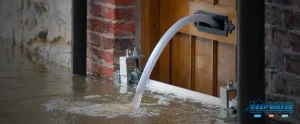Molds are microscopic fungi that live in the microcosm of plants but cannot produce food from sunlight or air. They are composed of filament clusters and eat plant and animal matter after these are decomposed.
Molds can be found indoors and out, reproducing mainly by releasing spores in the air. These settle on an organic matter where they can multiply by growing new mold clusters. Mold spores, when inhaled, can trigger mold allergy symptoms in some people.
What Is Mold Allergy?
Mold allergy means that your immune system treats mold spores as an allergen. It means it causes you to react differently to mold contact when compared to other people. Often, the reactions manifest in different forms, like sneezing, itchy eyes, rashes, or difficulty breathing.
Although there are many species of mold, the International Union of Immunological Societies said that only a small number of these can cause allergies. Additionally, molds aren’t generally considered to be potent allergens. Pollen, cat dander, and dust are much stronger, especially when airborne.
How to Find Out if You Have an Allergy to Mold
Molds may not be a strong allergen compared to pollen and dust, but they can still pose a serious health risk. If you have symptoms of an allergy to mold, you should address your mold problems at home as soon as possible. The following tests can be used to verify if you do have a mold allergy:
1. Skin Prick Test
This is a cost-effective and accurate way to confirm allergies. It uses diluted amounts of suspected allergens such as molds. These are applied to your skin through tiny punctures. Within 15 minutes, you may experience redness, swelling, and itching if you are allergic to the substance. Additionally, a “weal,” a raised, circular patch that looks like a honeycomb, can appear on the skin.
2. Intradermal Skin Test
An intradermal (under-the-skin) test is where a doctor or a nurse injects an allergen into the outer skin layer. It is often used if the skin prick test results are negative, but your doctor still suspects that you might have an allergy to mold. The test is likewise used to diagnose drug or venom allergy.
3. Blood Test
The radioallergosorbent test measures the amount of antibodies in your bloodstream, specifically, the IgE or immunoglobulin E. To do this, a blood sample is taken and sent to a medical laboratory, where it is tested for mold sensitivity.
A separate blood test, called the Specific IgE, can be used if you have a skin condition or are taking medication that makes it difficult to test your skin. Previously known as RAST (or ImmunoCAP testing), the Specific IgE test is hardly recommended for screening since it produces a high rate of false positive results. Still, it can be used to test children who cannot tolerate regular skin testing.
3. Mycotoxin Test
This is a specialized test used to determine mold toxicity levels. Mycotoxins are harmful chemicals naturally found in molds. After mycotoxin contact, you could develop serious health problems.
The test can include a blood or urine examination. Sinus, sputum, and tissue analysis can also be conducted to determine if your mold allergy has reached dangerous levels.
4. Allergy Test
Pet dander or dust mites could cause an allergic reaction, even if there are visible molds in your house. Although a mold allergy test can help, it is not always a reliable method when determining if you have an allergy. The test could yield a positive result, but it does not necessarily mean that you have a mold allergy.
5. Environmental Test
Molds are classified as environmental allergens, and according to statistics, approximately 1 in 5 Americans have been diagnosed with environmental allergies. An environmental test can be done in your home to confirm mold allergies.
However, the Center for Disease Control does not recommend environmental testing, even if mold is visible. No scientific evidence shows a correlation between test results and clinical mold symptoms. Also, an environmental test can be expensive, especially if the test involves an entire house.
6. Patch Test
This test will determine what allergen is causing your allergy. A small amount of the suspected allergen (a mold, for example) will be applied to your skin and covered by a bandage. A local rash could develop if you have an allergy to the substance, and you’ll get the complete results within 48 to 96 hours.
How to Treat Mold Allergy
Avoiding the triggers is the best way to manage your mold allergy because there is no absolute cure. However, several medications can be helpful. These include antihistamines and/or intramuscular steroids, although it’s best if these are prescribed by a healthcare professional.
Another option is Immunotherapy, which seeks to reduce your exposure to molds, but only if your allergist recommends this. Currently, there are still limited studies on whether mold immunotherapy actually works.
Key Takeaway
Molds are common household fungi that can cause allergic reactions in some people. Sneezing, rashes and watery eyes are common symptoms of mold exposure. Several tests are available if you exhibit these symptoms and you want to find out if you are allergic. The skin test is the most effective, although blood and allergy tests can also be considered.
Many doctors often prescribe several medications as a mold allergy treatment plan. This is often effective, although the easiest way to handle the condition is to eliminate the cause. This is done through a process called mold mitigation. Several companies are known for offering this service, so you just need to find out which one is the best.
Deep Water Emergency Services and Mitigation is your best choice for efficient mold removal services.
If you have molds at home causing you to sneeze, cough, or have difficulty breathing, it’s time to get rid of them. Call Deep Water Emergency Services and Mitigation immediately, and we’ll handle these fungi for you.
We are the best in what we do, and our mold mitigation team will prove that when you hire them to resolve your mold problem. Call us now.






